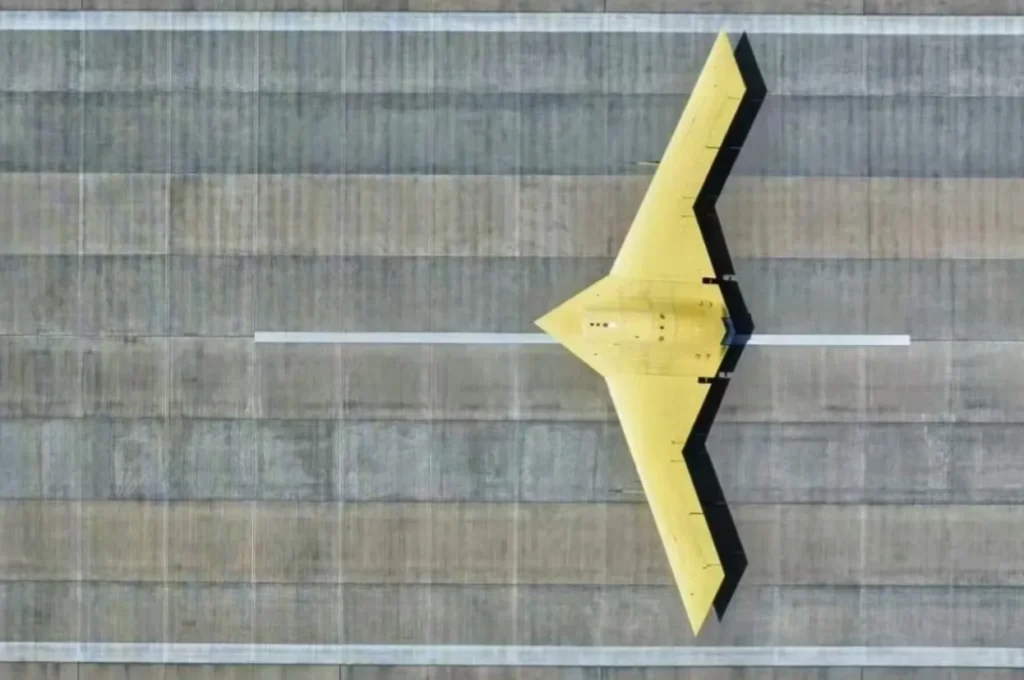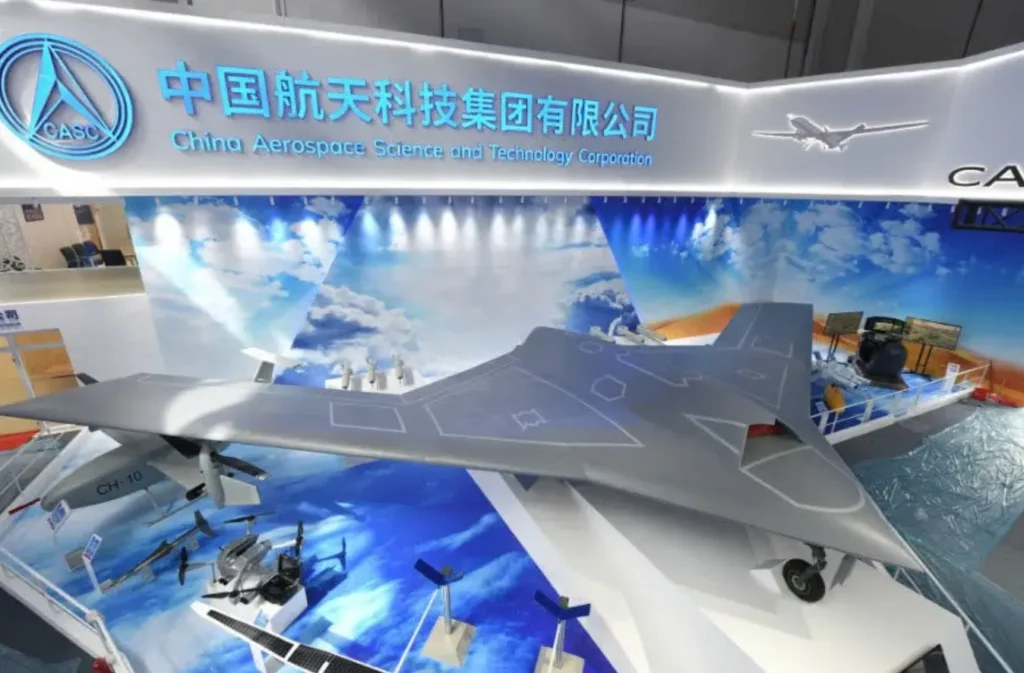Follow Us:
Share
Table of Contents:
China recently unveiled the CH-7 Stealth Drone (Rainbow-7), its latest stealth UAV (Unmanned Aerial Vehicle) developed by the China Aerospace Science and Technology Corporation (CASC). The advanced combat drone is already sparking conversations for its strategic potential and design resemblance to the U.S. B-21 Raider, a stealth bomber that remains highly classified.
With a focus on stealth, high-altitude endurance, and advanced strike capabilities, the CH-7 represents a leap in China’s UAV technology and hints at its growing ambitions in modern military operations.
Advanced Stealth and Design
The CH-7’s flying-wing design optimizes it for stealth missions. This design helps reduce radar visibility, heat signatures, and noise levels, allowing it to operate in high-risk areas with minimal detection risk. The drone’s streamlined structure, free from traditional tail configurations and equipped with an internal weapons bay, makes it an ideal candidate for penetrating enemy airspace undetected.

The CH-7 is built for endurance, long-range missions, and precision attacks. Measuring 10 meters in length with a wingspan of 22 meters, this UAV is designed for high-altitude, long-duration flight. Powered by a single turbofan engine, the CH-7 can cruise at speeds between Mach 0.5 and Mach 0.6, with a maximum speed of Mach 0.75. The UAV can reach altitudes of up to 13,000 meters, has an operational range of 2,000 kilometers, and can remain airborne for approximately 15 hours, making it highly adaptable for both surveillance and strike missions.
China’s development of such a high-end UAV reflects its intent to bolster reconnaissance and standoff strike capabilities. The CH-7 can conduct surveillance over extended areas, providing vital intelligence or engaging in precision strikes without exposing personnel to danger. Its ability to operate undetected in contested zones enhances China’s capability to conduct missions over crucial strategic locations.
The CH-7 aligns with China’s push toward multi-domain operations, which prioritize versatile, high-tech solutions for contested environments. Its stealth, endurance, and precision make it a force multiplier in scenarios where traditional air assets may face detection risks. China’s development of the CH-7 highlights its ambitions to integrate stealth UAVs into its broader military framework, allowing it to conduct operations with enhanced precision and reduced risk.
The CH-7’s internal weapons bay allows it to carry a range of standoff munitions while maintaining its stealth profile. This feature aligns with China’s emphasis on unmanned solutions capable of striking high-value targets with minimal chance of detection. The CH-7 can also be utilized to suppress enemy air defenses, making it a versatile tool in China’s growing drone arsenal.
Design Controversies and Technology Acquisition
A notable point of discussion around the CH-7 is its resemblance to the U.S. B-21 Raider. This similarity has led to renewed debate over whether China’s defense sector is adopting foreign designs to accelerate its capabilities.

While China faces accusations of reverse-engineering foreign technology, Chinese officials assert that the country is advancing its independent research and development capabilities. The CH-7 reflects a blend of adaptation and innovation, allowing China to refine and optimize its military technology to suit specific strategic goals. This approach has helped China narrow the technological gap in key areas like stealth, UAV technology, and long-range strike capability.
First showcased at the 2018 Zhuhai Airshow, the CH-7 attracted global attention for its stealth-focused design and advanced capabilities. Now, as of early 2024, the UAV is close to final development, with expectations for another showcase at Airshow China in November 2024.

The CH-7 could potentially shift the regional balance of power, particularly in the Asia-Pacific, by providing China with a stealth asset capable of precision strikes and intelligence gathering without risking direct confrontation.
The CH-7 is more than a UAV; it represents China’s ambition to lead in high-tech, unmanned combat solutions. Its capabilities make it a significant asset for intelligence gathering, precision strikes, and disrupting enemy defenses, positioning China as a serious contender in next-gen UAV technology.
As this stealth UAV approaches full operational status, defense analysts will closely monitor its impact on regional dynamics and the balance of power in the Asia-Pacific. China’s CH-7 illustrates how integrating advanced stealth technology into UAV platforms can create formidable tools that reshape military strategies and enhance global influence.
Share
Defense Feeds
Defense Feeds is publication focusing on informing, engaging, and empowering the world by providing accurate information from defense technology.
Powered by Defense Feeds © 2025 – All rights reserved.




